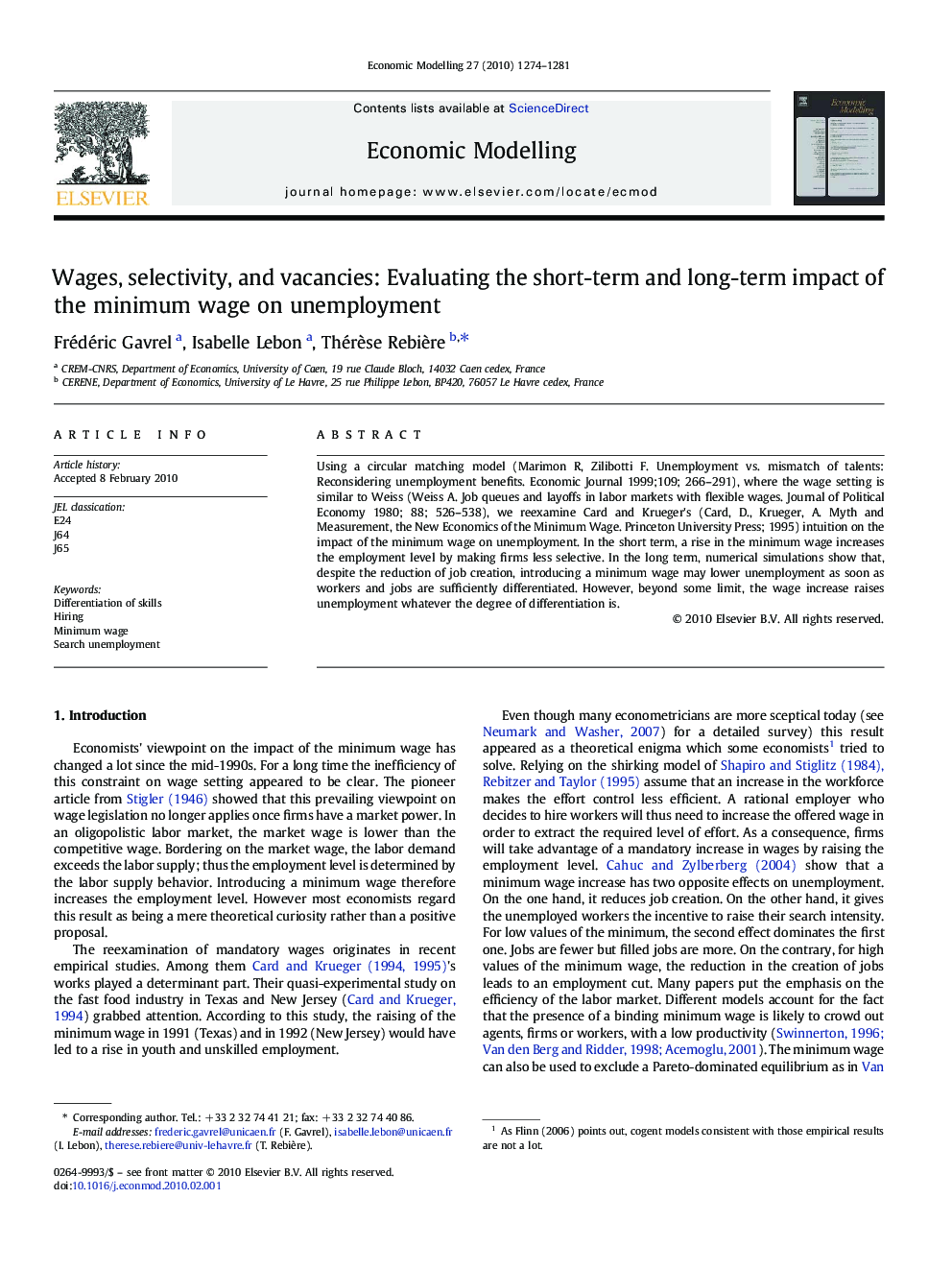| Article ID | Journal | Published Year | Pages | File Type |
|---|---|---|---|---|
| 5055261 | Economic Modelling | 2010 | 8 Pages |
Abstract
Using a circular matching model (Marimon R, Zilibotti F. Unemployment vs. mismatch of talents: Reconsidering unemployment benefits. Economic Journal 1999;109; 266-291), where the wage setting is similar to Weiss (Weiss A. Job queues and layoffs in labor markets with flexible wages. Journal of Political Economy 1980; 88; 526-538), we reexamine Card and Krueger's (Card, D., Krueger, A. Myth and Measurement, the New Economics of the Minimum Wage. Princeton University Press; 1995) intuition on the impact of the minimum wage on unemployment. In the short term, a rise in the minimum wage increases the employment level by making firms less selective. In the long term, numerical simulations show that, despite the reduction of job creation, introducing a minimum wage may lower unemployment as soon as workers and jobs are sufficiently differentiated. However, beyond some limit, the wage increase raises unemployment whatever the degree of differentiation is.
Related Topics
Social Sciences and Humanities
Economics, Econometrics and Finance
Economics and Econometrics
Authors
Frédéric Gavrel, Isabelle Lebon, Thérèse Rebière,
